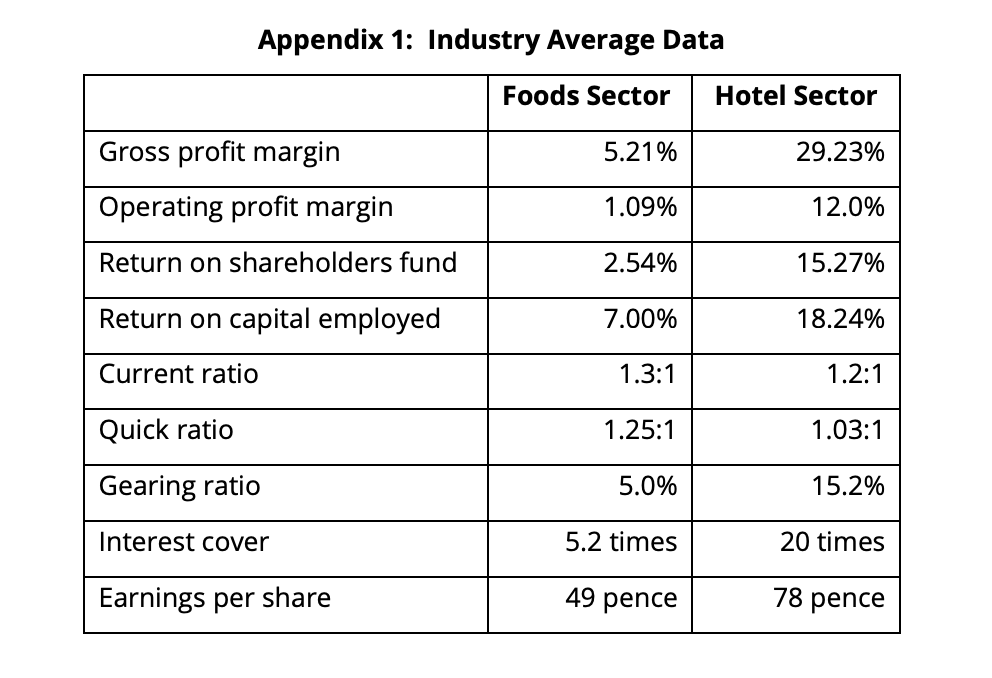Module code: BSM017
Module Title: Finance for Managers
Task(s) – content There are three separate tasks that determine the grade for this module.
Task 1: Analysis of financial information (covering learning outcomes 1 and 2)
COMPULSORY TASK Weighting: 40% (indicative word count = 1,000 words)
For this task, select ONE of the company’s published financial statements listed below.
- ICELAND FOODS LIMITED
- OYSTERFLEET PLC
Requirements:
- Using the consolidated financial statements of ANY of your selected company from above, you are required to critically analyse the financial performance of the company, comparing your results to the prior year and industry average contained in Appendix 1. Your analysis should highlight:
-
- The strength of the company;
- Any area of concern; and
- Suggestions for improvement.
Your analysis should include the computation of ALL profitability, liquidity, financial gearing, and investment ratios. Calculations should be clearly shown, with a note of the formula and figures used to arrive at your answers. These should then be attached as an appendix to your report and not be included in the main body of the text.
In the main body of the report, undertake a critical analysis of ANY FIVE ratios. Your discussion should focus on at least one ratio from each of the four categories of ratios and should only include a summary table showing the five (5) ratios selected for discussion in the main body of the report.
- Explain how the ratios computed in question (a) above is useful to TWO external users of financial information.
- Discuss briefly with example(s), TWO reasons why profit is different from cash. Your discussion should also draw insights from your selected company.

Task 2: Application of financial techniques and control of financial resources (covering learning outcome 3)
Answer EITHER Question 1 or Question 2
Weighting: 15% (indicative word count = 500 words)
QUESTION 1
BOTAS Limited, a retail outlet which was established 5 years ago is situated in a densely populated community in Scotland. The company has thrived in meeting the household consumable needs of the people in the community. However, the cost-of-living crises has affected sales in recent. A scrutiny of the company’s records shows the following information:
- the average inventory of the company for the last accounting period, the 12 months to 31 December 2023, was £8,950,000 and cost of sales was £27,100,000
- inventory turnover period for the year ended 31 December 2022 was 98 days.
- expired household goods in the warehouse have increase by 25% from £1,250,000 which was recorded in the preceding year.
- The company relied on overdraft £1.5million from a financial institution to support the company’s working capital during the period.
Requirements:
- Using relevant academic sources along with the above information on BOTAS Limited, evaluate the inventory management situation of the company. Your evaluation should highlight the following:
- The inventory turnover days for 2023 (calculation(s) should be attached as an appendix)
- The consequences of poor inventory management
- Implications of a reduction in the inventory turnover period by 30 days.
- Using relevant academic sources, briefly explain how budgetary planning can assist in managing the inventory of BOTAS Limited.
OR
QUESTION 2
BOTAS Limited, is considering a temporary expansion of its retail outlet by partnering with RESINOP Limited, a manufacturer of herbal-based products for four years. High level discussions are ongoing, and the following information have emerged:
- The extension of the retail outlet will cost £7 million.
- BOTAS will display and sell one of the herbal products at the temporary extension with estimated yearly sales put at 645,000 units.
- Annual supply of the product by RESINOP Limited will be 645,000 units just to meet the sales requirement for each year.
- The cost of buying and the selling price of the herbal product are estimated to be £5.20 and £10 per unit, respectively.
- It is the policy of BOTAS to evaluate this type of projects using a cost of capital of 12%.
- The residual value of the extension is estimated to be zero at the end of the four years.
- Annual fixed cost associated with the project is £650,000.
Requirements:
- Evaluate the above proposal using the Net Present Value approach and discuss its acceptability. In addition, your discussion should highlight the sensitivity of the Net Present Value to ANY THREE changes mentioned below:
- 5% increase in the cost of buying the herbal product.
- 3% decrease in the selling price of the herbal product.
- Annual decrease of 30,000 units in the volume of production and sales of the herbal product.
- An increase in the cost of capital to 20%.
- Using relevant academic sources, explain TWO limitations of the Net Present Value technique for evaluating the project.
Task 3: Appraisal of the relevance of financial tools (covering learning outcome 4)
Answer BOTH Questions
Weighting: 40% (indicative word count = 1,000 words)
QUESTION 1 Write a 500-word essay on ONE of the questions raised in the “Essay” Forum sections of Topics 1, 5, and 7 on Moodle.
QUESTION 2 Write a 500-word reflection on any of the first four topics in the module and discuss how your engagement with them has informed your understanding of the role of a manager.
“You can order BSM017 : Finance for Managers assessment from our service and can get a completely high-quality custom paper. Our service offers any of the BSM017 Academic paper written from scratch, according to all customers’ requirements, expectations and highest standards.”
100% Plagiarism Free
24X7 Customer Support
Multiple Revisions
100% Confidential
On-time Delivery
500+ Experts
